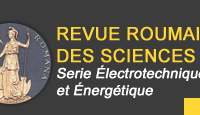Paper title: ELECTRIC FLUX IN UNIPOLAR INDUCTION DEVICES
Author(s): AURELIU PANAITESCU, RADU MIRCEA CIUCEANU,
Abstract: This paper is addressed to those who apply Hertz’s Electrodynamics to moving media,
this being the only Galilean relativistic electrodynamics, similarly to the classical
Mechanics. The purpose of this paper is to prove how the electric flux law must be
applied in the study of the devices with moving media. In order to exemplify this, we
have chosen the unipolar induction devices. If dS is an element on the surface Σ within
a medium moving with respect to the laboratory system of reference at one point on
dS, the electric flux density is D or D0, depending on how is defined or measured: by
the observer ℜ within the laboratory system of reference, or by the local observer ℜ0,
on dS within a system moving toghether with the medium. There are differences
between the electric fluxes S D d ⋅ ∫
Σ
and S D d 0 ⋅ ∫
Σ
. The Maxwell’s Electrodynamics,
extended for moving media, using only quantities defined by ℜ, is the classical
macroscopic Electrodynamics, which explains away all the experiments with moving
media, including those of unipolar induction. In Maxwell-Hertz Electrodynamics, still
used in engineering, the electric flux is S D d 0 ⋅ ∫
Σ
. This Electrodynamics cannot
explain all the results obtained by unipolar induction experiments.
Keywords: Electromagnetic quantities in moving media, Electric flux, Unipolar
induction, Distribution of electric charge. Year: 2009 | Tome: 54 | Issue: 2 | Pp.: 127-138
Full text : PDF (179 KB) |



